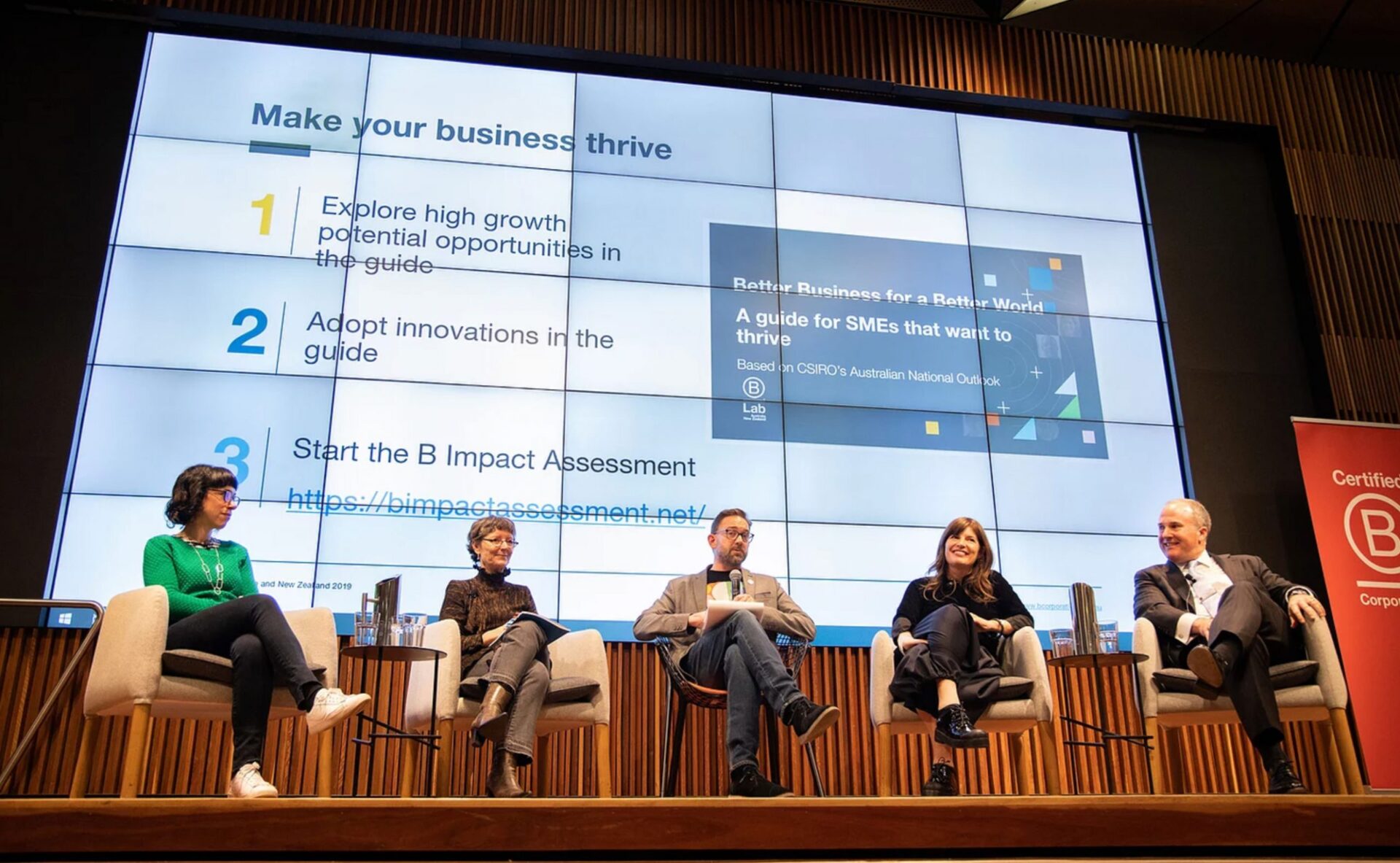- This feature was originally published on Centre for Social Impact’s “Social Impact Magazine” Issue 1.
When we started DrawHistory, our strategy and design studio, four years ago, we set out to normalise the idea of purpose and profit through storytelling. That, whether as a for-profit or nonprofit (or the often-used label, ‘for- purpose’), we could help our community partners generate public interest by highlighting their ethical business practice, socially-conscious products and cause-driven campaigns. We developed brands, implemented strategies, designed publications – raising over $91,400 for refugees through the largest crowdfund of its kind in Australia, and helped break down barriers at an international human rights symposium. We feel privileged to have been a part of over one hundred meaningful projects.
When we started DrawHistory, our strategy and design studio, four years ago, we set out to normalise the idea of purpose and profit through storytelling. That, whether as a for-profit or nonprofit (or the often-used label, ‘for- purpose’), we could help our community partners generate public interest by highlighting their ethical business practice, socially-conscious products and cause-driven campaigns. We developed brands, implemented strategies, designed publications – raising over $91,400 for refugees through the largest crowdfund of its kind in Australia, and helped break down barriers at an international human rights symposium. We feel privileged to have been a part of over one hundred meaningful projects.
Not long ago another creative agency executive suggested to me that managing a purpose-driven firm must feel like “guerrilla warfare” – that we would be constantly trying to overthrow the “existing government” until consumers understood the difference between a ‘good’ brand and a ‘bad’ one. To an extent, the sentiment rang true. There is a steep market education process when you’re the only agency exclusively working on social change projects. However, while I understood her analogous sentiment, I deeply believe that we need businesses to work together beyond the ‘us’ and ‘them’ for adoption to take shape at a critical mass. And movements like B Corp have been pivotal in turning the tide in this conversation. We are collectively starting to see a shift across the spectrum towards purpose and profit, with large businesses such as Patagonia, Intrepid Travel and Beyond Bank claiming a stake in the B Corp community alongside familiar, formidable social enterprises Koala, Who Gives a Crap and Winya.
Speaking with Gayertree Subramaniam, B Corp’s Community Manager, earlier this month, she said that, “[businesses are increasingly] starting to realise that they need to start having purpose and a positive impact on people and planet. Business can no longer afford to play a passive role in shaping the future of the world we want to live.”

This pendulum swing is reflected globally, though especially in our own local backyards, where, “…we have seen a seven-times growth in certification since 2014; an indicator that business in Australia wants to operate for reasons beyond profit generation.”
It initially seemed daunting for a small business like DrawHistory to undertake the certification process, especially as we were the first creative agency in Western Australia to be certified. We are a homegrown startup – the kind that at times believe cultural dialogue is shaped by the big multinationals. And they often are. However, market awareness and reach span beyond big corporates. There is an audience for smaller businesses to start productive dialogue on purpose and profit as well in our own communities. The majority of B Corps are small businesses. In a way, the certification is an equaliser in demonstrating impact as it requires businesses to undertake a rigorous company- wide assessment rather than offer a cash endowment.
In my time speaking with B Corp leaders, there are nuanced underlying reasons for tackling the assessment and gaining the certification. For DrawHistory, it was a way for us to better communicate our commitment and publicly declare that we are anchored to a broader set of stakeholder values; that we are answerable to both people and planet. For other organisations, it might be to attract and retain talent, build credibility and trust, or become better advocates of their missions. Qualitative data from the Harvard Business Review seemed to suggest that one key driver of the emergence of B Corps was because certified firms believed, “the major crises of our time are a result of the way we conduct business,” and they became B Corps to “redefine the way people perceive success in the business world.”
In the end, the B Corp certification encourages businesses to assess how they fare as positive change agents, and opens meaningful conversational pathways for leaders and workers within an organisation. The process doesn’t make a distinction between a ‘good’ business and a ‘bad’ one. As Subramaniam said, “[the] B Impact Assessment that businesses start to get moving on their impact journey, is very thorough and holistic in its audit and looks into how they fare across the areas of workers, community, customers, environment and governance.” You are scored along a spectrum which you are asked to continuously improve; a pulse check of sorts. The scorecard has been particularly helpful in our day-to-day work as an agency, where we are continuously trying to strengthen our sustainability practices like engaging with youth in our community more frequently through volunteer weekends, or in simple ways like purchasing KeepCups for our staff. It drives us to be a better business for everyone.
While the jury might still be out on whether businesses can truly thrive with purpose at its core, the B Corp movement has provided mounting evidence to suggest that, for many businesses, purpose and profit may not be at odds for much longer. It’s become a normalising force for entrepreneurs curious on converging the two. And for the consumer who’s had to choose in binary between second- rate ethical products and superior demerit goods, this potential tipping point serves as a moment of deliberation for a historically-adversarial concept. In the meantime, The People v Profit continues – only this time, businesses are banding together with a purpose beyond money.




